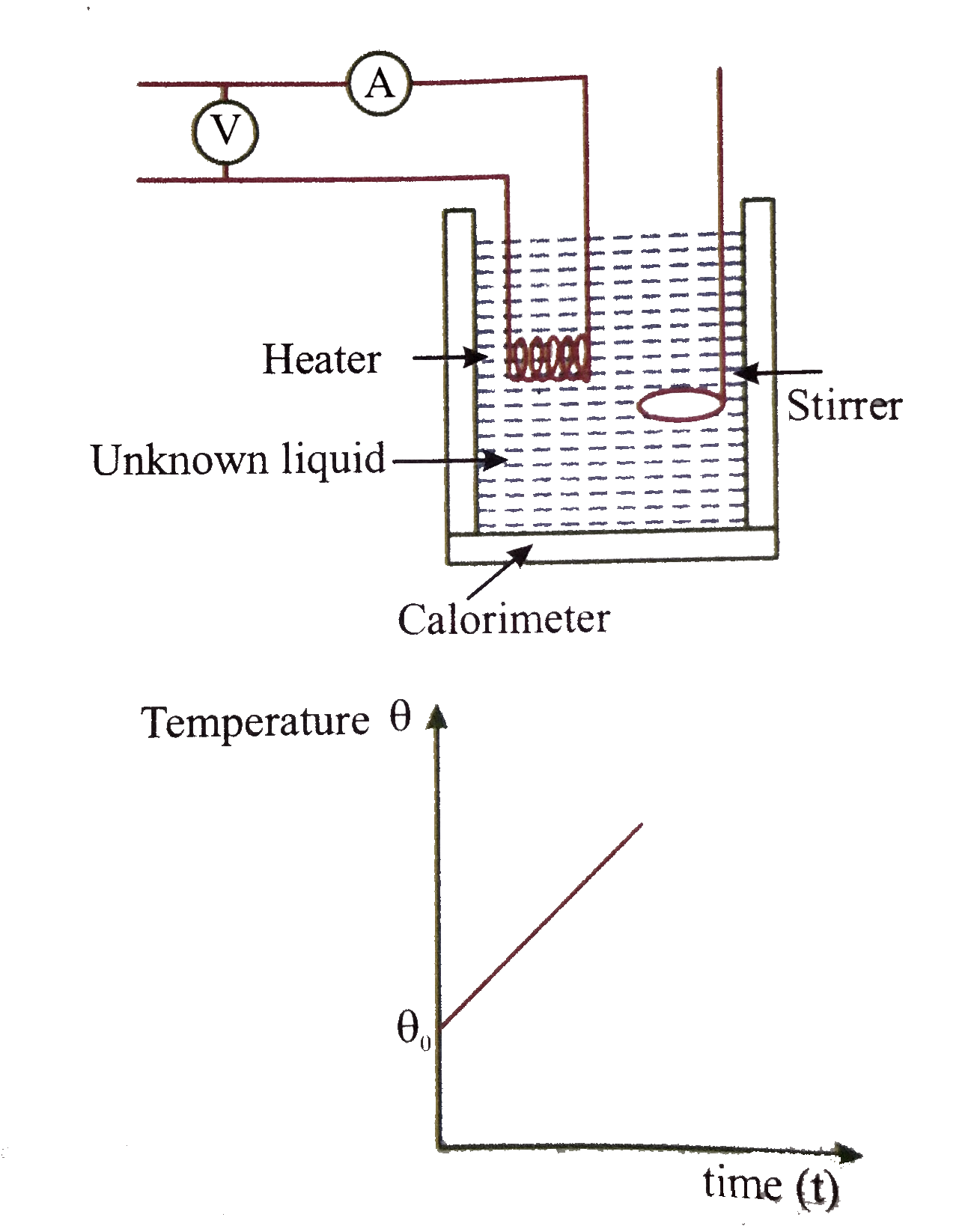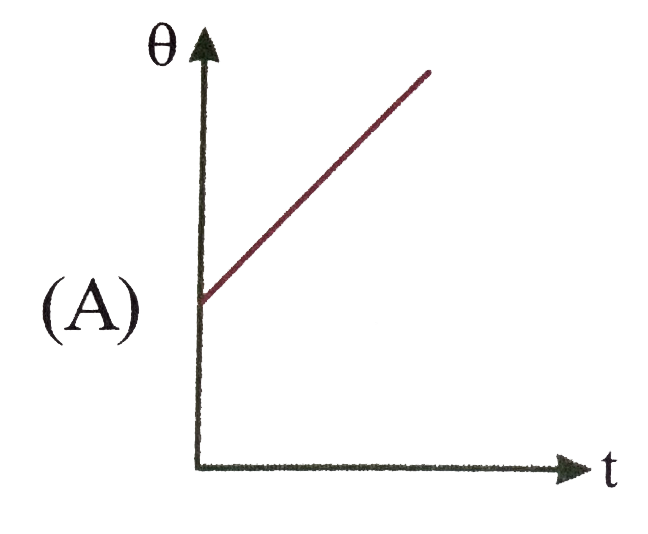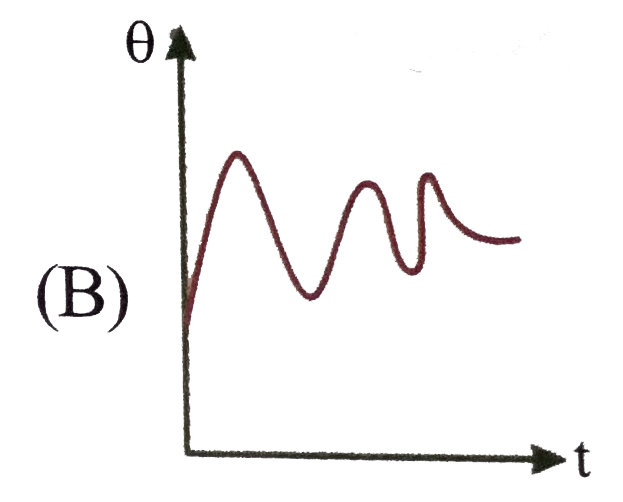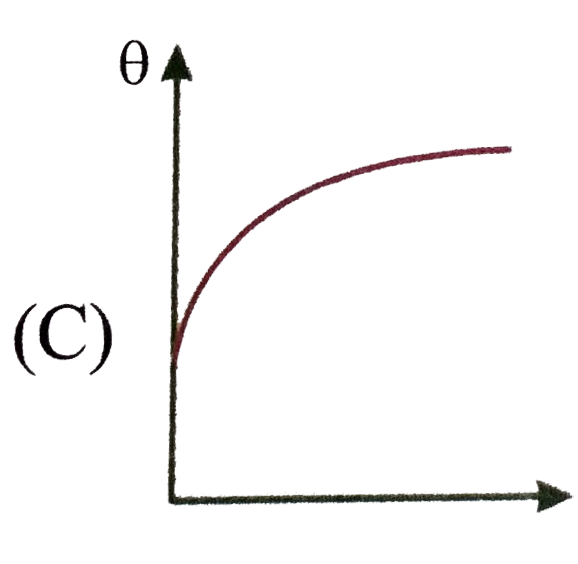If the system were lossing heat according to Newton's cooling law the temperature of the mixture would change with time according to (while heater was on) .
A

B

C

D

Video Solution
Text Solution
As the temperature increases heat loss to surrounding increases After some time the rate at which heat is lost become equal to rate at which heat is supplied and an equilibrium or steady state is achieved Hence temperature becomes constant after some time ∴C is correctr .
|
Topper's Solved these Questions
- EXPERIMENTAL PHYSICSBOOK - RESONANCECHAPTER - EXPERIMENTAL PHYSICSEXERCISE - Exercise
12 Videos
- EXPERIMENTAL PHYSICSBOOK - RESONANCECHAPTER - EXPERIMENTAL PHYSICSEXERCISE - Exercise -1 PART
1 Videos
- ELECTROSTATICSBOOK - RESONANCECHAPTER - ELECTROSTATICSEXERCISE - HLP
39 Videos
- GEOMATRICAL OPTICS BOOK - RESONANCECHAPTER - GEOMATRICAL OPTICS EXERCISE - Advance level Problems
35 Videos
Similar Questions
Knowledge Check
Figure shows an electrical calorimeter to determine specific heat capacity of an unknown liquid, First of all, the mass of empty calorimeter (a copper container) is measured and suppose it is m1. Then the unknown liquid is poured in it. Now the combined mass of calorimeter+liquid system is measured and let it be m2. So the mass of liquid is (m2−m1). Initially both were at room temperature (θ0).
Now a heater is immeresed in if for time interval t. The voltage drop across the heater is V and current passing through it is I. Due to heat supplied, the temperature of both the liquid and calorimeter will rise simultaneously. After tsec, heater was switched off, and final temperature is θr. If there is no heat loss to surroundings. Heat supplied by the heater=Heat absorbed by the liquid+heat absorbed by the calorimeter (VI)t=(m2−m1)S1(θf−θ0)+m1Sc(θf−θ0)
The specific heat of the liquid S1=(VI)tθf−θ0−m1Sc(m2−m1)

Radiation correction: There can be heat loss to environment. To compensate this loss, a correction is introduced.
Let the heater was on for tsec, and then it is switched off. Now the temperature of the mixture falls due to heat loss to environment. The temperature of the mixture is measured t/2sec. after switching off. Let the fall in temperature during this time is ɛ
Now the corrected final temperature is taken as θf=θf+ɛ
If the system were losing heat according to Newton's cooling law, the temperature of the mixture would change with time according to (while heater was on)A B
B C
C D
D
According to Newton second law of motion
AF=m×vBf=m×aCf=maDf=mvAccording to Hess's law, the heat of reaction depends upon
Ainitial condition of reactantsBinitial and final condition of reactantsCintermediate path of the reactionDend conditions of reactats
According to Hess's law , the heat of reaction depends upon
View SolutionAccording to Newton's law of cooling ,the rate of cooling of a body is proportional to the
View SolutionAccording to Hess's law, the heat of reacftion depends upon
View SolutionAccording to Hess's law , the heat of reaction depends upon
View SolutionAccording to Newton’s law of cooling. The rate of loss of heat, −dθ/dtof the body is
View Solution
